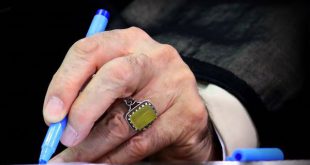This paper will examine the early history and contemporary religious, social and political experience of Shi‘i Muslims in America.
Most discussions about Islam in America have focused on Sunni Muslims neglecting, thereby, the experience of Shi‘i Muslims. As a matter of fact, it is correct to state that even in academic discourses, most studies equate Islam in America with Sunnism in America. This monolithic view has obscured the proper recognition and understanding of the religious experience of a significant religious minority in America. This paper will examine the early history and contemporary religious, social and political experience of Shi‘i Muslims in America. Given the dearth of literature on Shi‘ism in America, Liyakat Takim, the writer have had to rely on personal interviews that he conducted with important figures from the Shi‘i community.
The early Shi‘is in America
Voluntary migration to America by members of the Muslim community is said to have begun between 1875 -1912. Among those who migrated to America in the 1880’s
were Shi‘is from what was then called Greater Syria, many of whom settled in Michigan. According to M’roueh, at about the same time, some Shi‘is also arrived from India and Iran.
Between 1900 and 1914 several hundred settlers comprising diverse religious backgrounds migrated from the Middle East. Many of these migrants were Lebanese Shi‘is who settled in Detroit to work in the Ford Motor Company. Thereafter, migration by members of the Lebanese community increased further between 1918 and 1922. By the 1940s, about 200 Sunni and Shi‘i families had settled in Detroit. Khalil Alwan, a member of the Dearborn Shi‘i community in Michigan, was born in America in 1930. He recalls that his father migrated from Lebanon in 1914 to work for the railroads in Cedar Rapids, Iowa, and Sioux Falls, South Dakota. By the time Khalil’s father moved to Detroit in the 1920s, many Shi‘is had settled in that area. In the 1930s, Khalil remembers that Sunnis and Shi‘is would arrange joint gatherings. This continued until the late 1930s when the Hashimite Club was established. Hajjia Marium ‘Uthman, who came to Dearborn in 1949, also remembers that there was a steady influx of her Lebanese neighbors and friends after she and her family had migrated to Dearborn. By the 1950s there were many Shi‘i families dispersed in different parts of America.
The influx of these Lebanese migrants led to the establishment of Shi‘i institutions and centers of worship in America. Along with some of his friends, Khalil Alwan established an Islamic Sunday school in the mid 1940s. Khalil recalls that there were more social than religious activities held in the 1940s. Around this time, Shi‘is in Detroit would rent a hall to mark religious and social events. The Hashimite club, as it was then called, served the Shi‘i community until the early 1960s when a permanent mosque was built. The first Shi‘i mosque in America was the Islamic Center of America which opened its doors in Dearborn, Michigan in 1963. Shaykh Muhammad Jawad Chirri, who had relocated to America in 1949, served as the imam of the center. With a population of about 35,000 Lebanese migrants, Dearborn presently has one of the largest Shi‘i communities in America.
The predominance of mainly Lebanese Shi‘is in the early part of this century can be contrasted with the present American Shi‘i community which is composed of highly diverse ethnic and cultural groups. Most of the contemporary Shi‘is have relocated in numbers since the 1970s. They originate from Iran, Iraq, Lebanon, the Indian sub-continent, the Gulf States, East Africa and parts of North Africa. In addition, a growing number of Afro-Americans are converting to Shi‘ism after having initially converted to Sunnism or to the Nation of Islam.
 Ijtihad Network Being Wise and Faithful Muslim in the Contemporary World
Ijtihad Network Being Wise and Faithful Muslim in the Contemporary World

